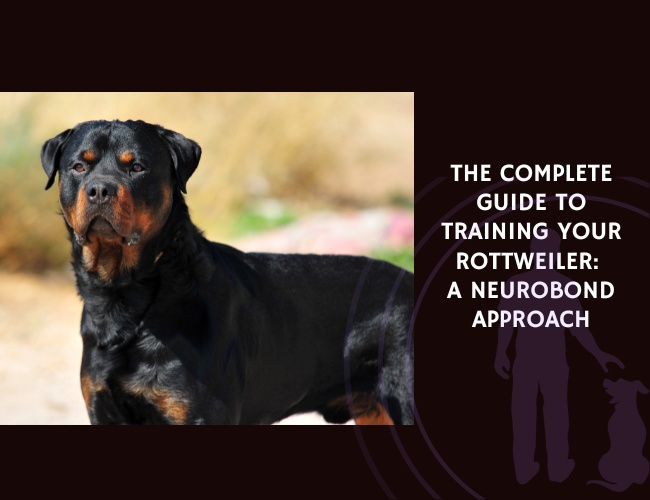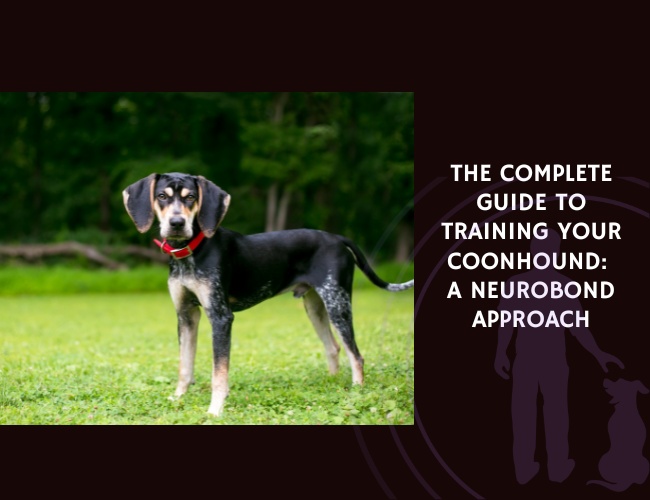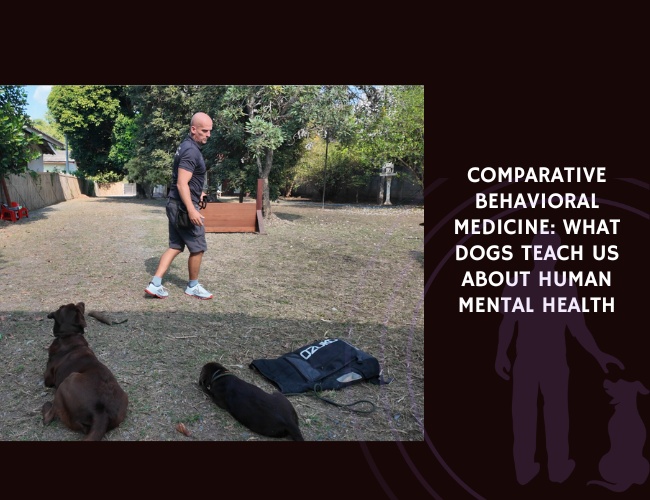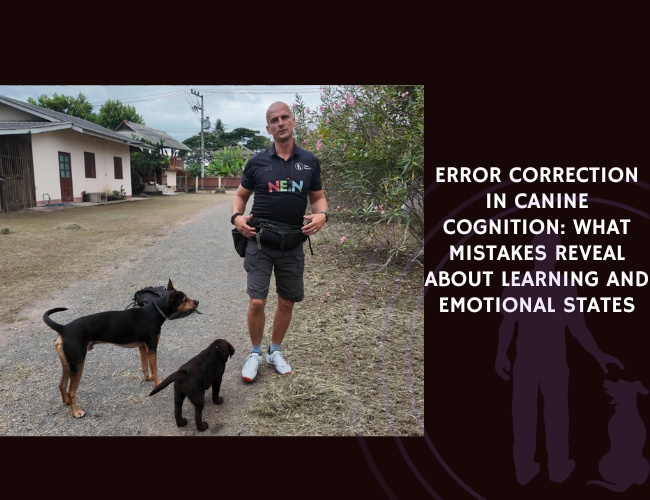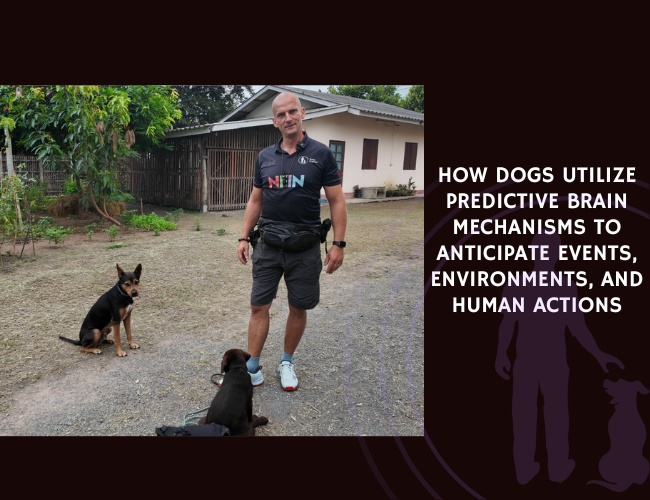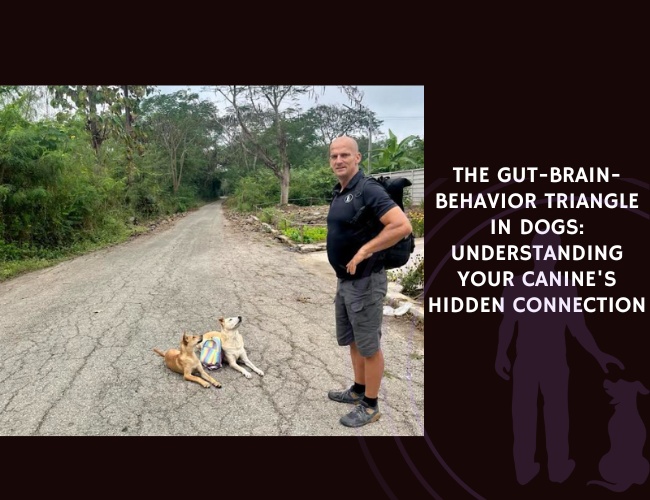Introduction: Understanding Your Rottweiler’s Training Journey
Your Rottweiler carries within them the legacy of Roman cattle dogs—intelligent, powerful, and deeply devoted companions who once guarded legions and herded livestock across ancient trade routes. This remarkable heritage shapes not just their physical presence, but their entire approach to learning and connection. When you understand that your Rottweiler’s 130-pound frame houses a mind that craves purpose and a heart that yearns for partnership, you begin to see training not as a challenge to overcome, but as a relationship to nurture.
The NeuroBond approach recognizes something fundamental about your Rottweiler: beneath that impressive exterior lies a dog whose neural pathways are wired for deep bonding, complex problem-solving, and instinctive protection. These aren’t obstacles to training—they’re the very foundations upon which extraordinary partnership is built. Let us guide you through a training philosophy that honors your Rottweiler’s natural intelligence while creating the invisible leash of trust that makes physical control unnecessary.
Character & Behavior: The Rottweiler’s Learning Blueprint
Understanding Your Rottweiler’s Cognitive Architecture
Your Rottweiler’s brain operates like a sophisticated working system—one that processes information through layers of instinct, emotion, and learned experience. Their cognitive abilities place them among the most intelligent working breeds, with a particular genius for understanding human communication that goes far beyond simple commands. When your Rottweiler tilts their head and watches you intently, they’re not just waiting for instructions—they’re reading your body language, emotional state, and intentions with remarkable accuracy.
The Working Mind at Rest: Even in quiet moments, your Rottweiler’s mind seeks purpose. This isn’t restlessness—it’s the expression of centuries of selective breeding for task-oriented thinking. Their ancestors didn’t just follow commands; they made independent decisions about protecting cattle from predators and managing herds across challenging terrain. This heritage manifests in your dog’s ability to learn complex, multi-step tasks and their occasional tendency to problem-solve in ways you might not expect.
Emotional Intelligence and Bonding Patterns: What makes Rottweilers extraordinary training partners isn’t just their intelligence—it’s their capacity for forming profound emotional bonds. The amygdala and limbic system in your Rottweiler’s brain create powerful associations between their human and feelings of security, purpose, and reward. This neurological wiring means that once trust is established, your Rottweiler doesn’t just obey—they actively seek alignment with your intentions. 🧡
The Protective Instinct: Asset, Not Obstacle
Your Rottweiler’s protective nature emerges from the same neural pathways that create their deep loyalty. Rather than suppressing these instincts—which would be both impossible and counterproductive—the NeuroBond approach channels them constructively. When your Rottweiler positions themselves between you and a stranger, they’re not being aggressive; they’re expressing an instinctive solution to perceived uncertainty. Our role isn’t to punish this natural response but to offer better alternatives through clear communication and trust.
Vocalization & Communication: How Your Rottweiler “Talks”
Decoding the Rottweiler Language
Your Rottweiler communicates through a rich vocabulary that extends far beyond barking. That low rumble in their chest when someone approaches the door? It’s not aggression—it’s information gathering, a vocalization that says, “I’m assessing, and I need guidance.” The excited “roo-roo-roo” sound they make when you come home? That’s pure emotional expression, the Rottweiler equivalent of saying, “You’re back, and my world makes sense again.”
The Silent Conversations: Perhaps most importantly, Rottweilers are masters of non-vocal communication. The way they lean their considerable weight against your leg isn’t just affection—it’s a grounding behavior that reinforces your bond while allowing them to literally feel your emotional state through physical connection. Their habit of maintaining eye contact during training sessions creates what neuroscientists call “interpersonal neural synchrony”—your brains literally begin to sync their activity patterns.
Reading Stress Signals: Understanding when your Rottweiler feels overwhelmed is crucial for effective training. Watch for:
- Excessive panting when not hot or exercised
- “Whale eye” (showing the whites of their eyes)
- Lip licking or yawning in non-tired contexts
- Sudden scratching or “shake offs”
These aren’t defiance—they’re your dog telling you, “I need a different approach right now.”
Training & Education: The NeuroBond Method in Practice
Building the Foundation: Connection Before Commands
Traditional training often begins with sit, stay, come. The NeuroBond approach begins differently—with connection. For your Rottweiler, this means establishing yourself not as a commander but as a trusted guide whose decisions make sense in their world. This foundational work happens through what we call “invisible training”—the thousand small interactions that teach your dog you’re worth following.
The Standing Leash Technique: Here’s how natural learning unfolds: When your Rottweiler pulls on the leash, instead of yanking back (which only creates oppositional reflex), you simply stop and stand on the leash with enough slack that they can sit or lie down but not continue forward. You wait. Your Rottweiler, being the intelligent problem-solver they are, will eventually sit or lie down. The moment they do—reward. They’ve just learned through their own discovery that calm behavior creates forward movement. No force, no commands—just natural consequence and reward.
From Bond to Task: Once your Rottweiler consistently looks to you for guidance (usually after 2-3 weeks of consistent bonding work), introducing specific behaviors becomes remarkably simple. Because you’ve established trust and communication first, your Rottweiler actively wants to understand what you’re asking. Commands become conversations, not confrontations.
The Adolescent Challenge: Navigating the Testing Phase
Between 6 and 18 months, your Rottweiler’s brain undergoes significant reorganization. The adolescent Rottweiler isn’t being stubborn when they “forget” their training—their neural pathways are literally being rewired. During this phase, they may test boundaries not out of defiance but because their developing prefrontal cortex is learning to regulate the intense emotions and instincts of their limbic system.
Consistency Without Confrontation: This is when the NeuroBond philosophy proves its worth. Because our training is based on relationship rather than rigid obedience, temporary regression doesn’t damage the foundation. You simply return to basics—reinforce the bond, reward good choices, and remember that this phase will pass. Your calm consistency during their neural chaos teaches them that you’re the stable point in their changing world.
Performance & Activities: Channeling the Working Drive
Purpose-Driven Training
Your Rottweiler doesn’t just want to learn—they need to work. This isn’t about keeping them busy; it’s about fulfilling a neurological need for purposeful activity. When we give our Rottweilers jobs, we’re not just training behaviors—we’re satisfying deep instinctive drives that, when unmet, can manifest as destructive behaviors or anxiety.
Creating Meaningful Work:
- Carrying tasks: Teach your Rottweiler to carry their own water or toys in a backpack during walks. This simple job engages their historical role as a working dog.
- Search and rescue games: Hide treats or toys and let them problem-solve to find them, engaging both their intelligence and their tracking instincts.
- Protection sports (with proper guidance): Schutzhund or controlled protection training channels their guarding instincts constructively.
- Therapy work: Many Rottweilers excel as therapy dogs, their calm presence and intuitive nature making them ideal for this meaningful work.
Mental Stimulation Through Problem-Solving
Remember, your Rottweiler’s ancestors made independent decisions about herd management and protection. Modern training should honor this cognitive capacity. Puzzle feeders aren’t just entertainment—they’re neural exercise. Teaching your Rottweiler to differentiate between toys by name (“bring me the blue ball” vs. “bring me the rope”) creates the kind of complex thinking their brains crave.
Nutritional Recommendations: Fueling the Learning Brain
The Neuroscience of Nutrition
Your Rottweiler’s ability to learn, focus, and maintain emotional regulation depends significantly on their nutritional status. The brain consumes about 20% of the body’s energy, and for a large, intelligent breed like the Rottweiler, proper nutrition directly impacts training success.
Omega-3 Fatty Acids and Cognitive Function: DHA and EPA omega-3 fatty acids are crucial for maintaining neural plasticity—your dog’s ability to form new neural pathways during learning. Wild-caught fish or high-quality fish oil supplements can significantly improve focus and retention during training sessions.
Protein Quality and Neurotransmitter Production: Your Rottweiler’s ability to produce serotonin (for emotional regulation) and dopamine (for reward processing) depends on adequate amino acids from quality protein sources. Look for foods with named meat sources as the first ingredients, aiming for 22-26% protein content for adults, slightly higher for puppies.
Blood Sugar Stability: Rottweilers can be prone to reactive behavior when blood sugar fluctuates. Feeding schedules that maintain stable glucose levels—typically twice daily for adults—support consistent temperament and learning readiness. Avoid foods with excessive simple carbohydrates that cause energy spikes and crashes.
Training Treats: Strategic Reward Selection
The treats you choose for training aren’t just rewards—they’re neurological triggers. High-value treats (like freeze-dried liver or small pieces of cooked chicken) create stronger dopamine responses, making them ideal for teaching new behaviors or working through challenging distractions. Lower-value treats work well for maintaining already-learned behaviors without creating overexcitement. 🐾
Health Concerns: When Medical Issues Affect Training
Physical Health and Behavioral Expression
Your Rottweiler’s training responsiveness can be dramatically affected by underlying health issues. Hip dysplasia, common in the breed, doesn’t just cause physical discomfort—it can manifest as reluctance to sit, apparent stubbornness about down commands, or increased reactivity due to chronic pain. Understanding these connections helps us address the root cause rather than the symptom.
Thyroid Function and Temperament: Hypothyroidism, which affects many Rottweilers, can cause dramatic behavioral changes including increased aggression, anxiety, or lethargy. If your previously responsive Rottweiler suddenly becomes difficult to train or shows personality changes, a comprehensive thyroid panel should be your first step.
Neurological Considerations: Some Rottweilers may experience seizure disorders or other neurological conditions that affect their ability to process and retain training. These aren’t training failures—they’re medical realities that require adjusted approaches and veterinary support.
The Pain-Behavior Connection
A Rottweiler experiencing joint pain may become protective of their body, showing increased reactivity when approached or touched. This isn’t aggression—it’s communication. The NeuroBond approach recognizes that all behavior is feedback, and sudden changes in training response often signal physical discomfort that needs addressing.
Powerful. Loyal. Purposeful.
Bond before control. A Rottweiler’s deep loyalty and protective nature thrive when trust comes first. Connection transforms training from command-and-comply into a shared mission built on mutual respect.
Instinct is an ally. Their guarding drive, problem-solving mind, and emotional intelligence aren’t obstacles—they’re tools. Channelled through NeuroBond, these traits create a partner who chooses cooperation over compliance.
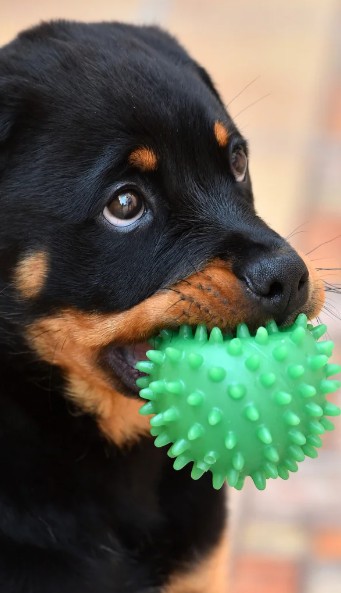
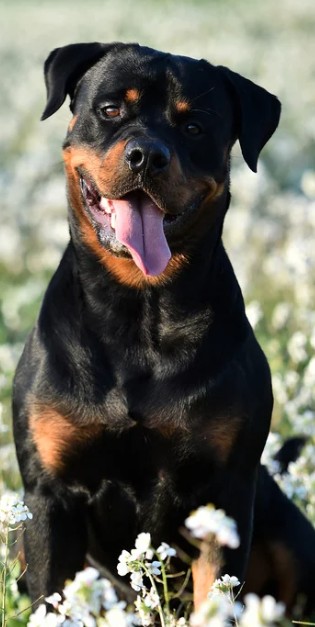
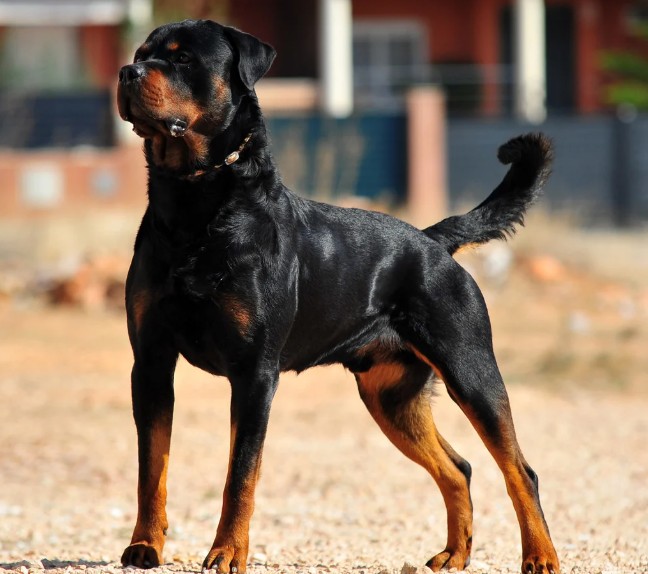
Purpose fuels peace. Giving your Rottweiler meaningful work—whether carrying, searching, guarding, or comforting—satisfies ancient drives, sharpens focus, and turns raw power into calm, reliable presence.
Lifestyle & Environment: Creating the Optimal Learning Space
Environmental Design for Success
Your home environment profoundly impacts your Rottweiler’s ability to learn and retain training. These dogs thrive in structured environments where expectations are clear and consistent. This doesn’t mean rigid military precision—it means predictable routines that allow your Rottweiler’s brain to relax into learning rather than constantly assessing for changes or threats.
Safe Spaces and Decompression Zones: Every Rottweiler needs a designated space where they can retreat and process. This isn’t isolation—it’s providing your dog with the opportunity for neural integration after training sessions. A quiet corner with their bed, away from household traffic, allows the hippocampus to consolidate new learning into long-term memory.
Multi-Dog Dynamics: If you have multiple dogs, remember that Rottweilers often prefer to be the only dog or to have clearly defined pack positions. Training sessions may need to be conducted separately initially, as the presence of other dogs can trigger competitive instincts that interfere with learning. Once individual training is solid, group work can actually enhance learning through social facilitation.
Exercise and Mental Balance
Your Rottweiler needs approximately 2 hours of activity daily, but here’s what many don’t understand: physical exhaustion doesn’t equal a well-balanced dog. A tired Rottweiler without mental stimulation is like a physically fit person with an unsatisfied mind—restless and potentially destructive. Balance high-energy activities with calm, focused training sessions and puzzle-solving activities.
Senior Care: Adapting Training for the Aging Rottweiler
Cognitive Changes and Continued Learning
As your Rottweiler ages, their brain undergoes changes that affect but don’t eliminate their ability to learn. The aging Rottweiler brain shows decreased processing speed but maintained capacity for new learning when approached correctly. This means training sessions should be shorter but can still introduce new concepts—in fact, continued learning helps maintain cognitive function.
Sensory Adjustments: Declining vision or hearing doesn’t mean training stops—it means communication adapts. Hand signals become more important as hearing decreases. Textured markers can help dogs with vision loss navigate their environment. The NeuroBond connection, built on trust and physical proximity, becomes even more valuable as other senses decline.
Maintaining Dignity Through Choice: The senior Rottweiler may not spring up for every command, but this isn’t defiance—it’s the wisdom of age combined with physical reality. The NeuroBond approach honors this by offering choices: “Would you like to come, or would you prefer I come to you?” This maintains their dignity while preserving the training relationship.
Pain Management and Behavioral Health
Arthritis affects most senior Rottweilers, and chronic pain can dramatically alter behavior. A dog who snaps when touched isn’t becoming aggressive—they’re communicating discomfort. Working with your veterinarian to manage pain while adapting training to accommodate physical limitations maintains both physical and psychological wellbeing.

Advanced Training Concepts: Beyond Basic Obedience
The Invisible Leash Reality
After months of consistent NeuroBond work, something remarkable happens: your Rottweiler begins to maintain proximity and attention without any physical control. This isn’t magic—it’s the result of thousands of micro-interactions that have taught your dog that staying close to you is both safe and rewarding. The invisible leash isn’t about control—it’s about choice. Your Rottweiler chooses to stay near because your presence has become their emotional anchor.
Public Access Training: A properly NeuroBond-trained Rottweiler can achieve a level of public behavior that surprises those who only know the breed by reputation. They learn to ignore distractions not through harsh corrections but because checking in with you has become more rewarding than environmental stimuli. This makes them excellent candidates for therapy dog work or simply being exemplary breed ambassadors.
Working Through Behavioral Challenges
Reactivity and the NeuroBond Solution: If your Rottweiler shows reactivity to other dogs or people, traditional training might focus on suppression. The NeuroBond approach asks instead: “What problem is your dog trying to solve?” Usually, it’s uncertainty about how to handle a situation. By becoming your dog’s trusted guide—showing them through your calm response that the trigger isn’t threatening—you address the cause, not just the symptom.
Resource Guarding Transformation: Rottweilers may guard food, toys, or even people. Instead of confrontation, we use the NeuroBond principle of offering better solutions. Trade protocols (exchanging guarded items for something better) combined with trust-building exercises teach your Rottweiler that giving things up leads to better outcomes. This isn’t about dominance—it’s about creating an economy of trust.
Troubleshooting Common Training Challenges
The Pulling Problem: A Case Study in Natural Learning
Your 120-pound Rottweiler pulling on the leash isn’t trying to dominate you—they’re following their instinct to move forward toward interesting stimuli. The NeuroBond solution doesn’t involve prong collars or harsh corrections. Instead:
- Stop all forward movement when pulling begins (not as punishment, but as natural consequence)
- Wait for your dog to create slack in the leash (they will—Rottweilers are problem-solvers)
- Mark and reward the moment of slack with forward movement
- Gradually increase duration of loose-leash walking required for continued movement
This teaches your Rottweiler that they control whether walks continue through their choices, not through strength.
The Adolescent Regression: Patience Through Neural Chaos
When your 10-month-old Rottweiler suddenly “forgets” everything they’ve learned, remember: their brain is literally reorganizing. The prefrontal cortex (impulse control) is developing while hormones surge. This isn’t failure—it’s biology. The NeuroBond approach weathered this storm by:
- Returning to foundation work without frustration
- Shortening training sessions to match decreased attention span
- Increasing rewards for known behaviors to maintain motivation
- Understanding that this phase typically resolves by 18-24 months
The Science Behind Success: Understanding Neuroplasticity
How Rottweiler Brains Change Through Training
Every training session literally reshapes your Rottweiler’s brain. When you reward a behavior, dopamine floods the neural pathway that created that behavior, making it more likely to fire again. With repetition, these pathways become myelinated—wrapped in a fatty sheath that makes the neural signal travel faster. This is why consistent practice transforms hesitant compliance into eager, automatic response.
The Critical Role of Sleep: Your Rottweiler’s brain consolidates learning during sleep. The hippocampus replays the day’s experiences, strengthening important memories and discarding irrelevant information. This is why short, frequent training sessions followed by rest periods are more effective than marathon training attempts.
Stress and Learning Inhibition: When cortisol (stress hormone) levels rise, your Rottweiler’s ability to access the prefrontal cortex (thinking brain) decreases. They default to brain stem responses (fight, flight, freeze). This is why the NeuroBond emphasis on calm, trust-based training is neurologically sound—low stress equals maximum learning potential.
Creating Your Training Plan: A Structured Approach
Week 1-2: Foundation Building
- Focus entirely on bond creation through proximity rewards
- Teach the “check-in” (dog voluntarily making eye contact)
- Establish feeding rituals that reinforce your role as provider
- Begin the standing leash technique for 5 minutes daily
Week 3-4: Communication Development
- Introduce name recognition in increasingly distracting environments
- Develop the “touch” cue (nose to hand) as a recall foundation
- Start position changes (sit/down) through luring, not forcing
- Implement the “find it” game for mental stimulation
Week 5-8: Skill Expansion
- Add duration to all known behaviors gradually
- Introduce distance work in secure environments
- Begin structured walks with loose-leash practice
- Incorporate training into daily activities (sit before meals, down during your dinner)
Week 9-12: Generalization and Proofing
- Practice known behaviors in new locations
- Add controlled distractions progressively
- Introduce one new complex behavior weekly
- Begin preparation for specific activities (therapy work, sports, etc.)
Ongoing: Lifetime Learning
- Maintain training through daily life integration
- Introduce new challenges monthly to prevent boredom
- Adjust for age-related changes
- Celebrate the partnership you’ve built
Conclusion: Is This Approach Right for You and Your Rottweiler?
The NeuroBond approach to training your Rottweiler asks something profound of you: to see your dog not as a subordinate to be controlled, but as an intelligent partner whose instincts and emotions deserve respect. This isn’t the easiest path—it requires patience, consistency, and a willingness to understand your dog’s perspective. But for those ready to embrace this philosophy, the rewards are extraordinary.
You’ll discover that your Rottweiler is capable of far more than simple obedience. They can become an intuitive partner who responds to your subtlest communications, who chooses cooperation over compliance, and who demonstrates the kind of nuanced understanding that makes the human-canine bond truly remarkable. The invisible leash you create through trust and understanding is stronger than any physical restraint could ever be.
Ask yourself:
- Am I ready to see training as relationship-building rather than command-installation?
- Can I remain patient through the natural phases of my Rottweiler’s development?
- Am I willing to address my dog’s instincts with understanding rather than suppression?
- Do I have the consistency to maintain this approach even when progress seems slow?
If you answered yes, then you’re ready to experience what it truly means to train a Rottweiler through connection, not control. Your journey together won’t always be easy, but it will be profound. And at the end of it, you won’t just have a well-trained dog—you’ll have a partner who understands you as deeply as you understand them.
The Rottweiler at your feet isn’t just waiting for commands. They’re waiting for connection. The NeuroBond approach simply shows you how to build it, one interaction at a time, until the day you realize that your Rottweiler isn’t following your commands—they’re following you. And that makes all the difference. 🧡
Remember: Every Rottweiler is an individual. While breed tendencies provide valuable insights, your dog’s unique personality, history, and experiences will shape their training journey. The NeuroBond approach celebrates this individuality, adapting to meet your dog where they are while guiding them toward their fullest potential.

